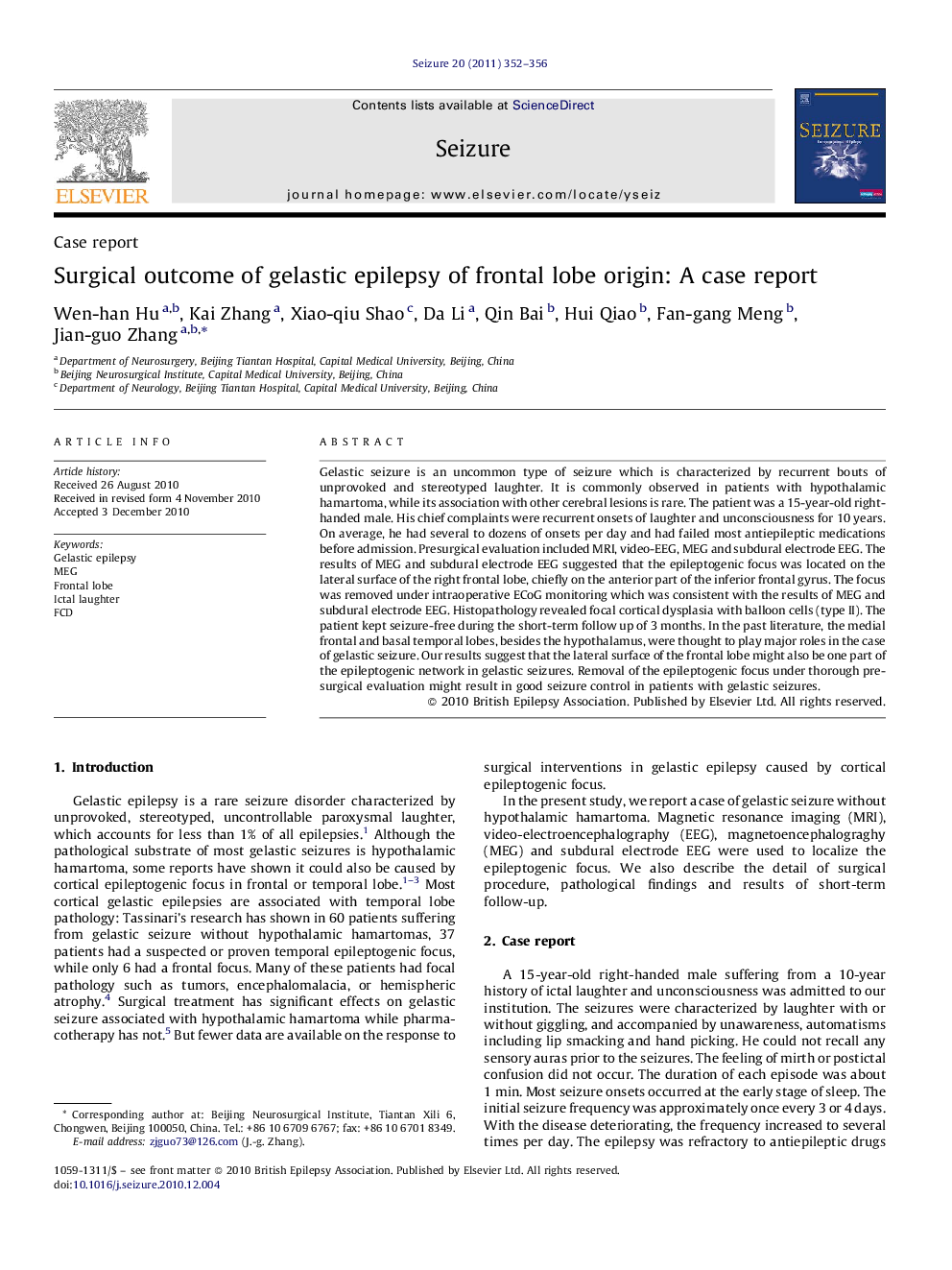| Article ID | Journal | Published Year | Pages | File Type |
|---|---|---|---|---|
| 340670 | Seizure | 2011 | 5 Pages |
Gelastic seizure is an uncommon type of seizure which is characterized by recurrent bouts of unprovoked and stereotyped laughter. It is commonly observed in patients with hypothalamic hamartoma, while its association with other cerebral lesions is rare. The patient was a 15-year-old right-handed male. His chief complaints were recurrent onsets of laughter and unconsciousness for 10 years. On average, he had several to dozens of onsets per day and had failed most antiepileptic medications before admission. Presurgical evaluation included MRI, video-EEG, MEG and subdural electrode EEG. The results of MEG and subdural electrode EEG suggested that the epileptogenic focus was located on the lateral surface of the right frontal lobe, chiefly on the anterior part of the inferior frontal gyrus. The focus was removed under intraoperative ECoG monitoring which was consistent with the results of MEG and subdural electrode EEG. Histopathology revealed focal cortical dysplasia with balloon cells (type II). The patient kept seizure-free during the short-term follow up of 3 months. In the past literature, the medial frontal and basal temporal lobes, besides the hypothalamus, were thought to play major roles in the case of gelastic seizure. Our results suggest that the lateral surface of the frontal lobe might also be one part of the epileptogenic network in gelastic seizures. Removal of the epileptogenic focus under thorough pre-surgical evaluation might result in good seizure control in patients with gelastic seizures.
